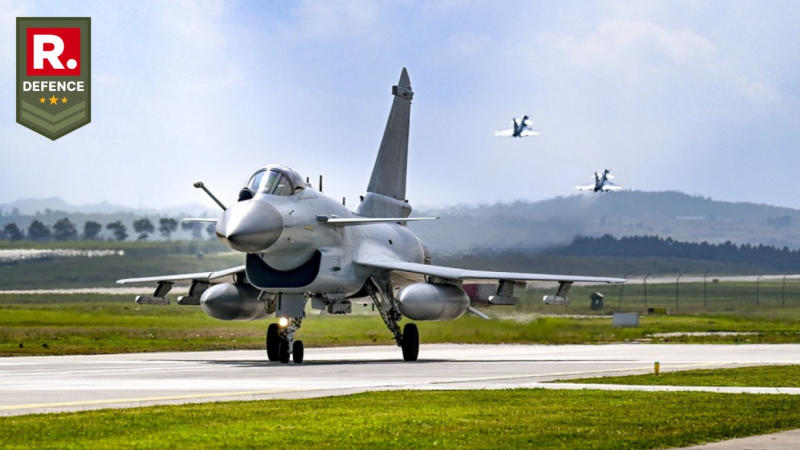
Bangladesh’s potential alignment with China through military purchases may escalate regional tensions and prompt a recalibration of defense strategies among its neighbors. | Image:
Chinamil
Dhaka, Bangladesh – The Bangladesh Air Force (BAF) is contemplating a significant upgrade to its fleet with the potential acquisition of 16 Chinese Chengdu J-10C fighter jets. This development, first reported on December 18, 2024, is stirring debates on both the operational effectiveness of the J-10C and the broader geopolitical implications for Bangladesh’s foreign relations.
The J-10C, a fourth-generation multirole fighter developed by China, has been positioned as a more affordable option compared to its Western counterparts, such as the F-16 or Eurofighter Typhoon. However, military analysts are raising questions about the aircraft’s true capabilities and the risks associated with leaning heavily on Chinese military technology. The fighter’s technological shortcomings, including concerns over its avionics and radar systems, have caused scepticism within defence circles, especially in comparison to more established Western fighters.
A Fighter Jet with Limited Capability?
While the J-10C boasts a sleek design and multirole capabilities, critics argue that it is heavily based on older technologies and reverse-engineered components. The aircraft’s performance in simulated combat scenarios, especially against heavier and more advanced jets like Russia’s Su-35, has not consistently proven superior. According to a detailed analysis by Defence Security Asia, the J-10C struggles with issues related to its radar and avionics when compared to modern, Western-made jets. Additionally, the fighter is powered by domestically produced engines that have faced reliability issues in earlier models, raising further concerns about its long-term operational viability.


The reliability of the J-10C’s engine is especially concerning, as earlier Chinese jet engines, such as the WS-10A, have been prone to failure after relatively short periods of use. This could pose significant maintenance challenges and operational limitations for any air force that depends on them, including the Bangladesh Air Force.
Lower Price Tag with Mounting Operational Costs
Despite these concerns, the J-10C’s lower price tag compared to other Western fighters makes it an attractive option for countries with budget constraints. However, operational costs associated with the J-10C could offset the initial savings. Military experts estimate that maintaining a fleet of 100 J-10Cs could incur annual operational costs of up to $2 billion—relatively high compared to alternatives like the F-16V or Su-30.
The acquisition of the J-10C also has major geopolitical implications. Bangladesh has historically maintained strong ties with China, but its recent political shifts—particularly following the 2024 political upheavals—have signalled a potential pivot towards strengthening its defence ties with Western powers, especially the United States and Europe. Any decision to proceed with the Chinese fighter jet acquisition could strain Bangladesh’s newly reoriented foreign policy and complicate relations with its Western allies.



Moreover, such a move would align Bangladesh with China in a manner similar to Pakistan, which has already acquired the J-10C. The expanding presence of Chinese military hardware in South Asia is a point of concern for India, which is already wary of China’s increasing influence in the region. India, having faced its own border tensions with China, is likely to view any enhancement of Bangladesh’s military capabilities with Chinese equipment as a direct security concern, particularly given the proximity of Bangladesh to India’s northeastern region.
Potential Arms Race in South Asia?
The J-10C acquisition would represent a significant modernization of Bangladesh’s air force, but it also risks altering the delicate security balance in South Asia. China’s growing footprint in the region through military exports, infrastructure investments, and strategic alliances could further fuel an arms race among neighbouring countries, including India and Pakistan.



India, which already possesses advanced fighter jets like the Sukhoi Su-30MKI and the Rafale, would closely monitor any such developments in Bangladesh’s military procurement. The strategic location of Bangladesh, sharing borders with India’s sensitive northeastern states, makes the issue even more pressing. If the J-10C is indeed procured, it could raise questions about Bangladesh’s long-term defence alignment and its role in South Asia’s broader security framework.
A Balancing Act for Bangladesh
As Bangladesh grapples with these multifaceted issues, the decision to acquire Chinese military aircraft will not only impact its defense capabilities but also its diplomatic posture. Should Bangladesh proceed with the purchase of the J-10C, it would need to carefully navigate the complex and shifting geopolitical landscape, balancing its relationships with both China and Western allies.
As regional powers continue to assert their influence, the potential acquisition of the J-10C by Bangladesh highlights the complexities of modern defence procurement decisions in South Asia. With operational doubts about the fighter’s effectiveness and the broader implications for Bangladesh’s foreign policy, the decision must be carefully weighed. The outcome could reshape the regional balance of power, not just in terms of military might, but also in terms of diplomatic relationships that have far-reaching consequences for South Asia’s security.

